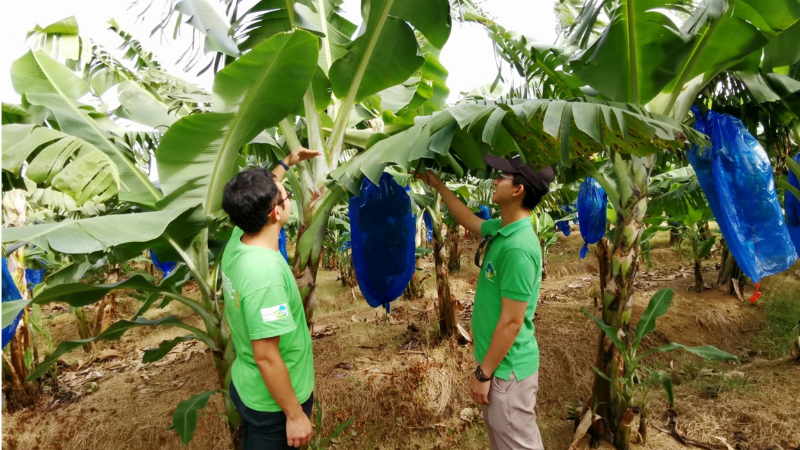by National Fair Trade Organization in St. Lucia
Description
The most significant effect that climate change has had on St. Lucia are
- Annual tropical storms.
- Severe droughts.
- Flooding.
Since 2018, the island has experienced four tropical storms and two severe droughts. The passage of each storm causes the banana crop to topple and break, depriving smallholder farmers of their livelihoods for a long period of time and resulting in a replanting programme almost every year. Income and food security also suffer.
To mitigate the effects of climate change, several measures have been instituted. These include
a) The introduction of a drought-resistant variety by the Taiwan Technical Mission.
b) The introduction of a shorter variety (Tai-Chiao No.2) which is more robust against tropical storm winds
c) Extensive desilting of the main interception channels and field drains to mitigate flooding.
d) Adoption of global GAP and climate-smart agriculture, such as soil and water conservation measures.
e) A programme to develop resilience. This has involved planting a range of tree crops that act as windbreaks to protect banana plants from strong winds.
f) Creating buffer zones along all waterways.
g) Promoting crop diversification and a polyculture system to minimise risk.
h) Finally, to alleviate drought, the introduction of irrigation systems in the main banana-growing regions.
Results
- Where wind breaks were established, damage was less after the passage of tropical storm.
- The desilting program prevented flooding.
- The diversification program assured an income and protected livelihoods during the gestation period.
- The shorter variety (Tai-Chiao No.2) suffered less damage as compared to the regular varieties.
- The soil conservation measures reduced soil loss, minimized chances of land slippage.
Moreover, by the institutionalization of these measures, access to the international market with minimal disruption income, livelihoods and food security are assured. Adoption of a poly cropping system offers diversity, thereby it enhances the range of crops available for consumption at the household level and healthier diets are assured as well. Through Global GAP and climate smart agricultural practices, biodiversity is enhanced. The buffer zones and windbreak program help to build resilience.
Climate smartness*
From the food and nutritional security perspective the use of drought-resistant and shorter varieties, contribute to minimize the physiological stress and mechanical damage that result in limited yield or complete harvest loss. Crop diversification with annual (watermelon, honeydew, cantaloupe, bell peppers, tomatoes, lettuce, cabbage etc.) and perennial crops that have been traditionally grown by farmers but at the same time the most imported, may represent viable options to increase medium-to long-term self-sufficiency in food production. Likewise reduce farmers´ risk to suffer economic losses due to low-selling prices, market fluctuations or climate-related impacts, expanding their target markets. Cropping calendars is essential to avoid these issues, allowing better planning and staggered harvests for banana and secondary crops throughout the year. In this sense, from early stages in the crop value chain, such as farm design or seed and varieties selection, begins to be at stake and strengthen the adaptation capacity and food security of farmers. Efficient and sustainable management of soil and water, along with the inclusion of tree crops (serving as windbreaks or buffer zones) are aligned with CSA goals, presenting benefits in climate change mitigation through carbon capture in above- and below-ground biomass. Public and private sectors play an important role in stimulating the adoption of these practices by facilitating the consolidation of local and sustainable agricultural value chains and markets that can increase farmers adaptation capacity, while discount carbon emissions from the food system by reducing food imports. Then, connecting farmers´ produce with main domestic supermarkets and the tourism sector was valuable to recognize these circular economies, as occurred during the closure of the country´s borders due to COVID-19 pandemic.
*This is done in the framework of climate-smart agriculture (CSA) approach. Climate-smartness in agriculture means understanding impacts of climate change and variability along with the agricultural activity, which includes the planning of what crop to plant, when to plant, what variety to plant and what type of management practices are needed to reduce the impact on the environment (e.g. emissions reduction), maintain or increase productivity (e.g. yields) while increasing resilience and improving livelihoods.


